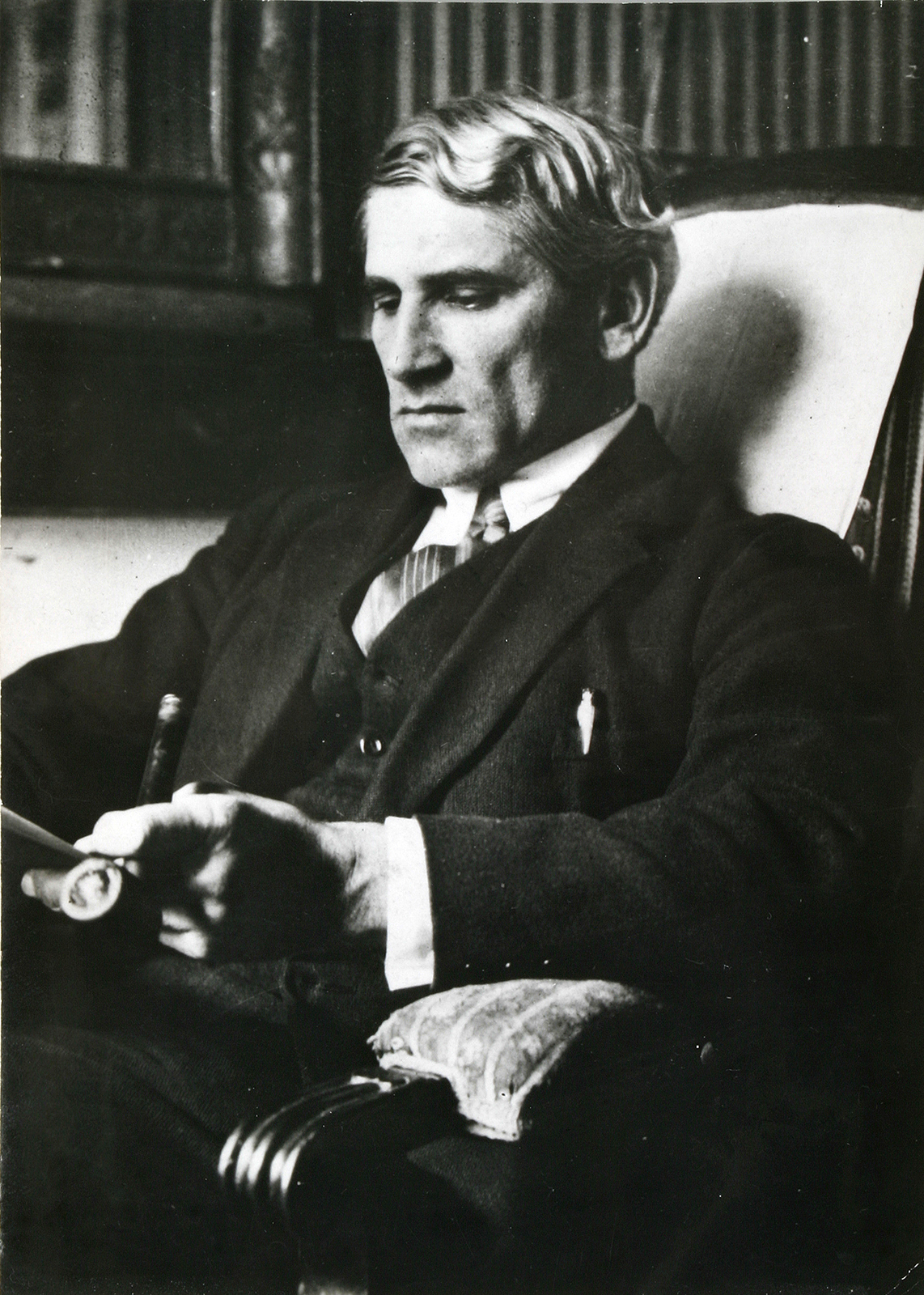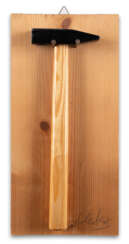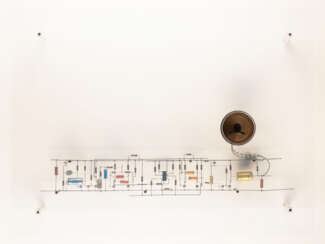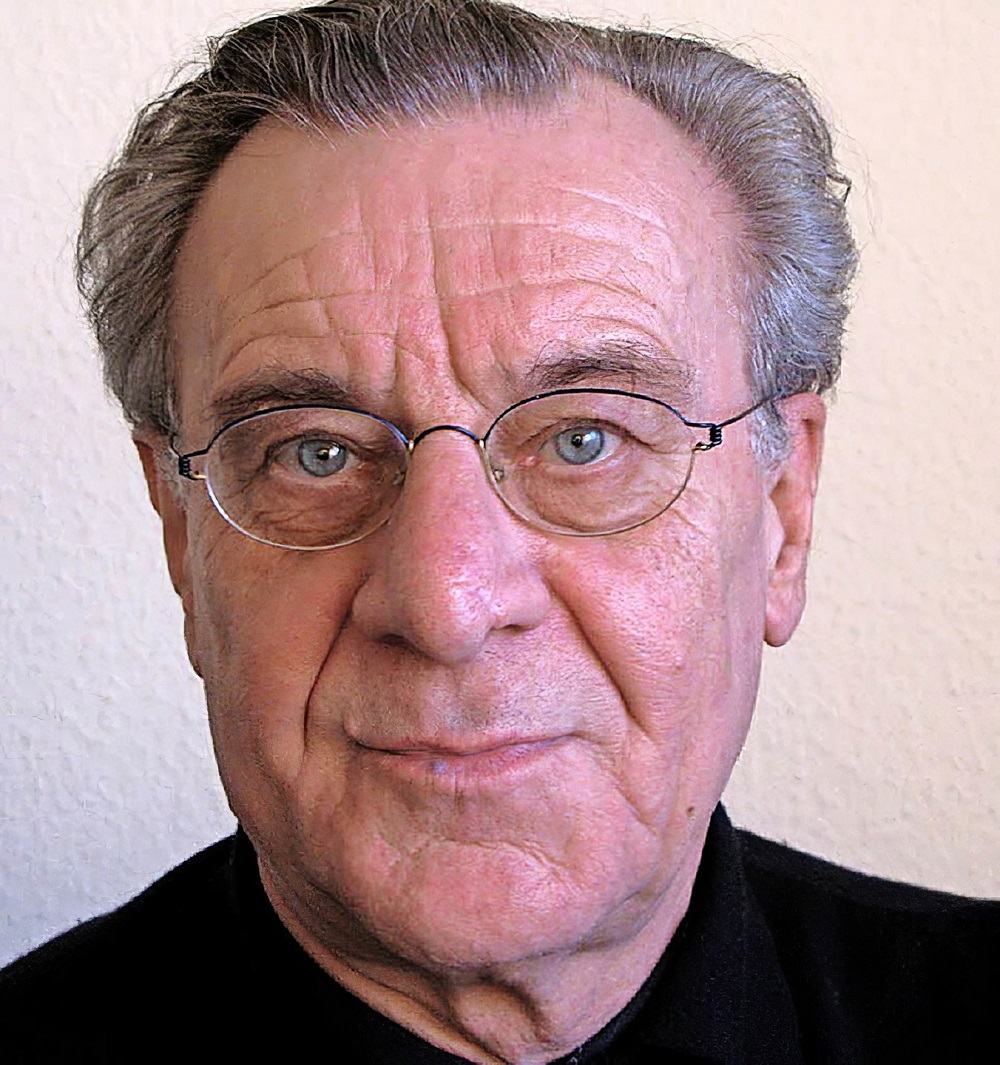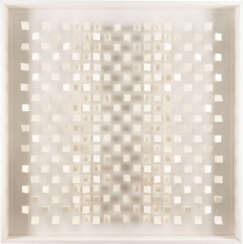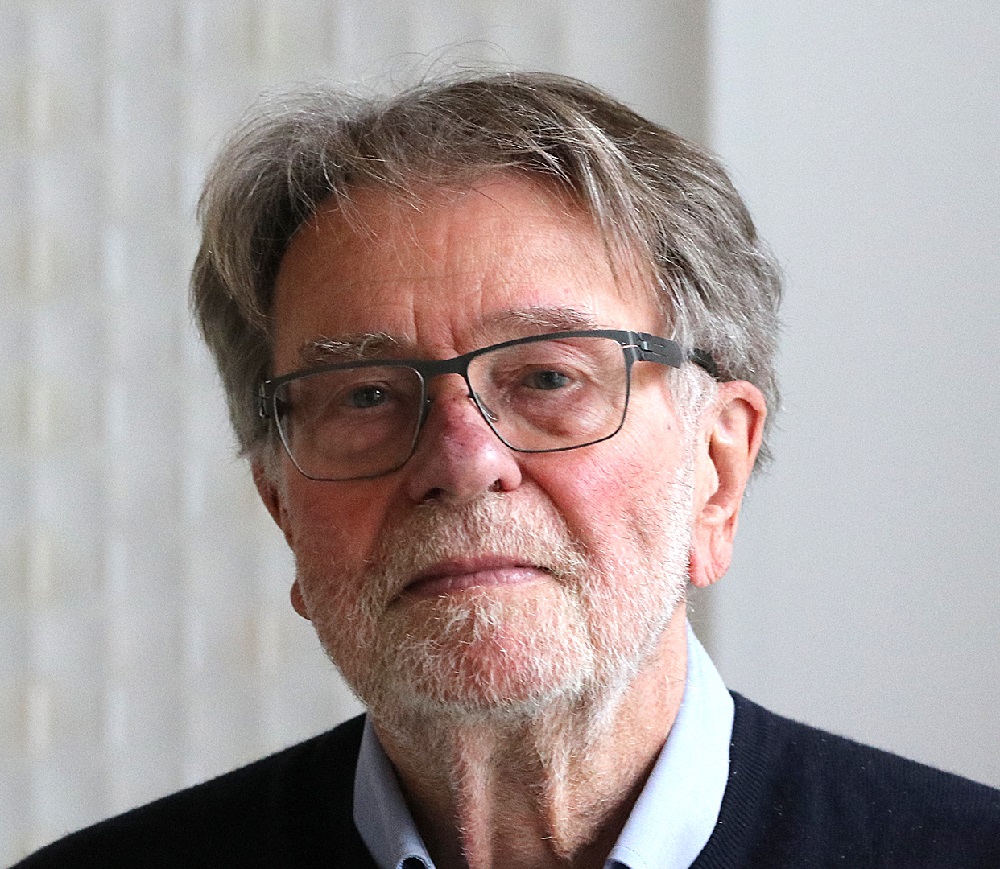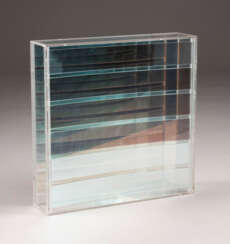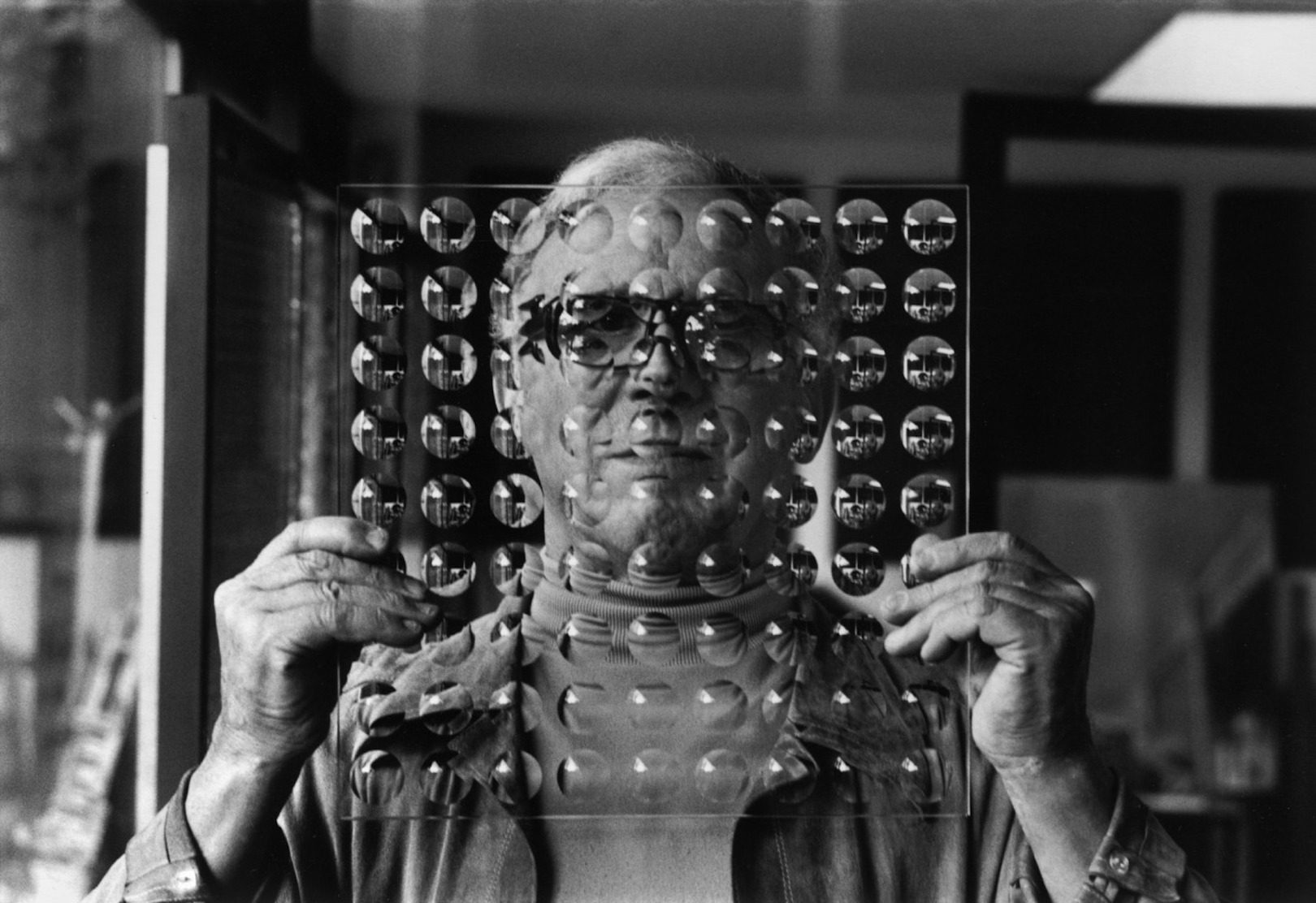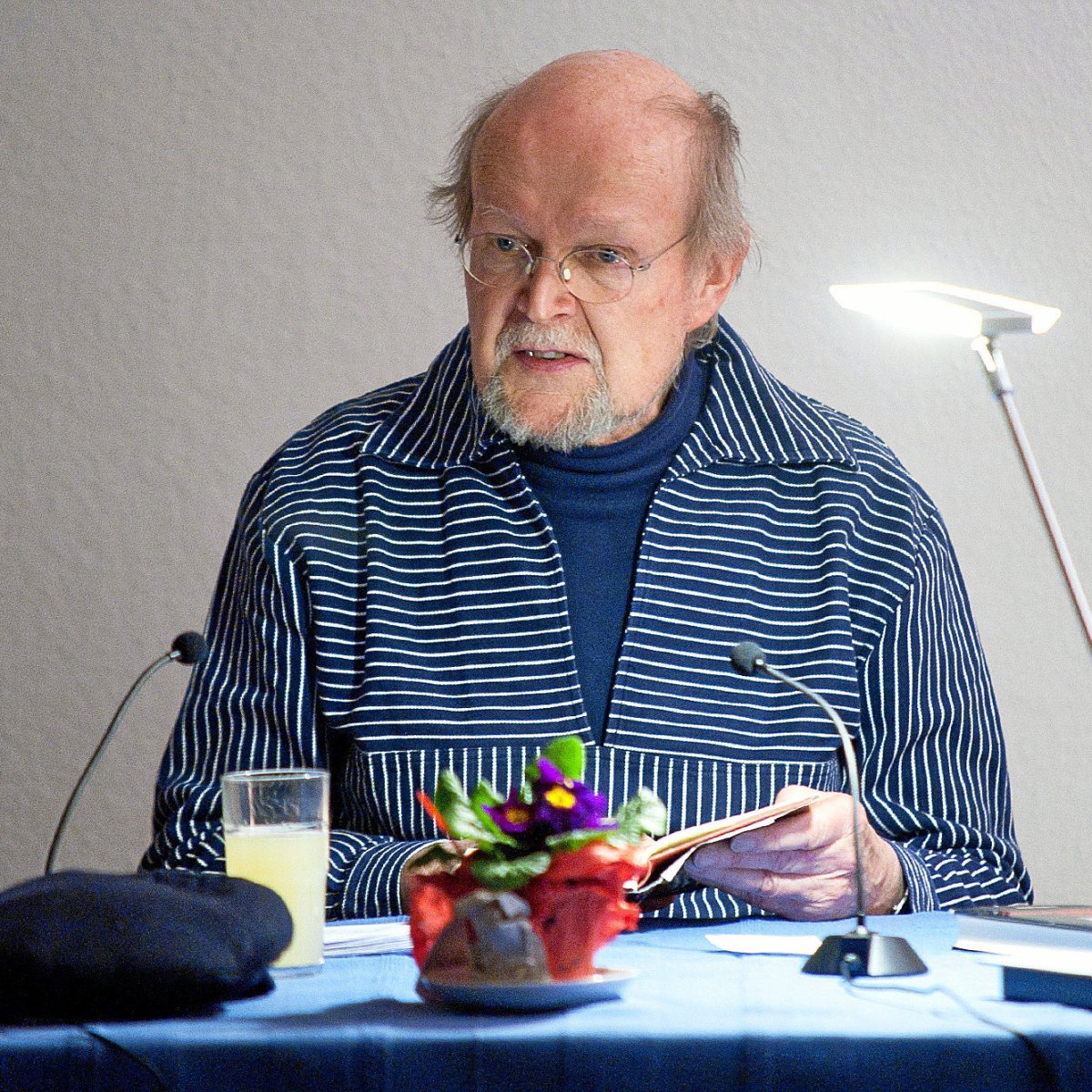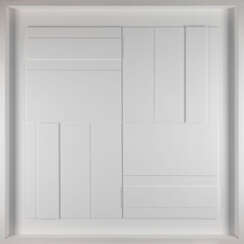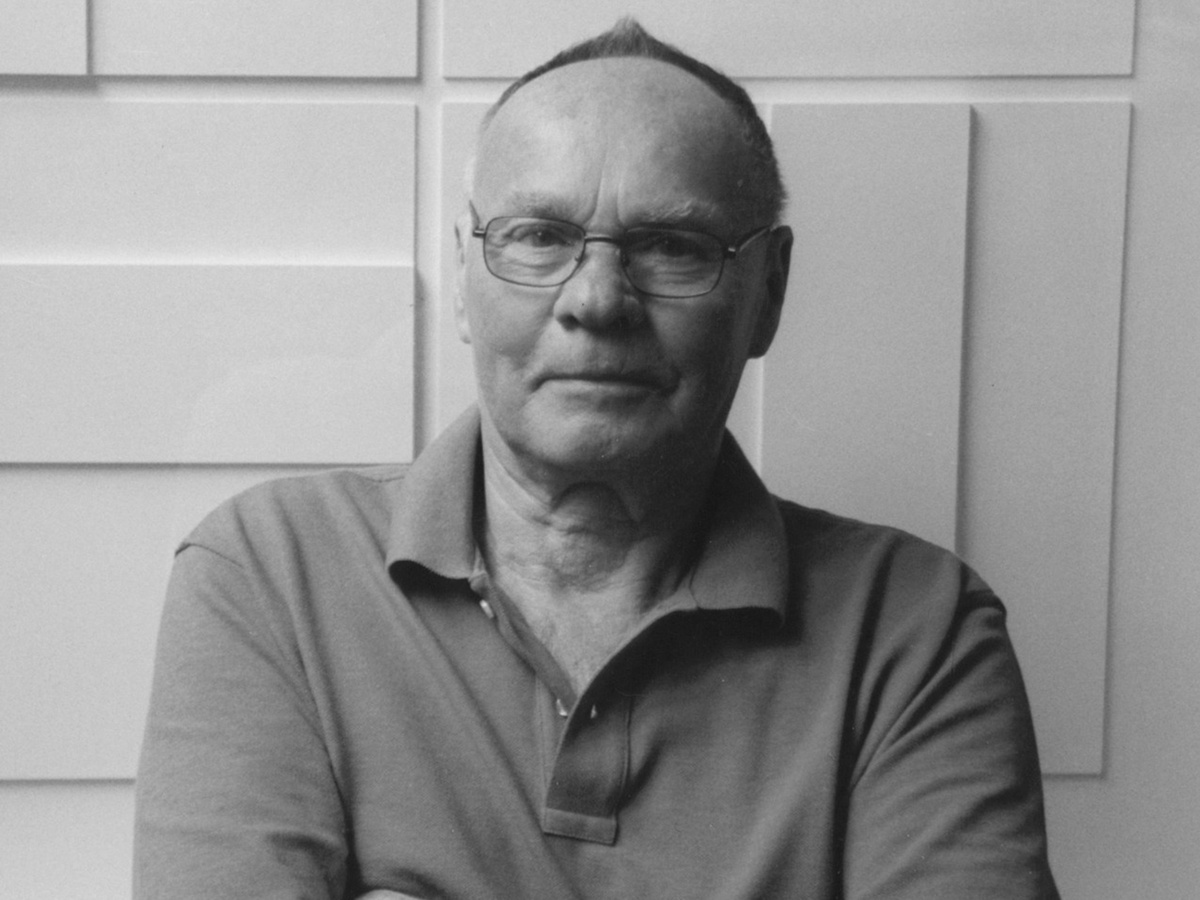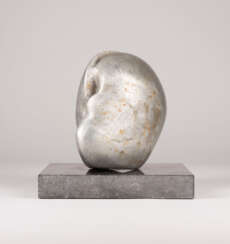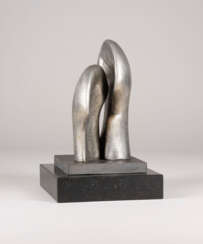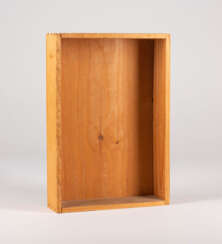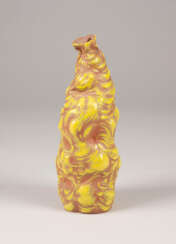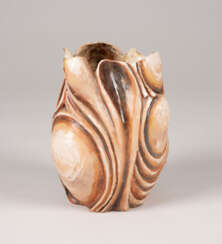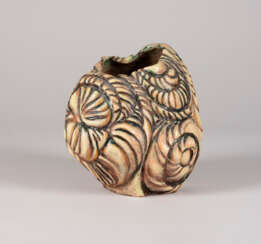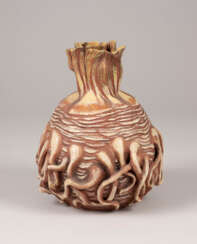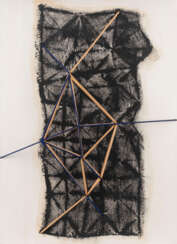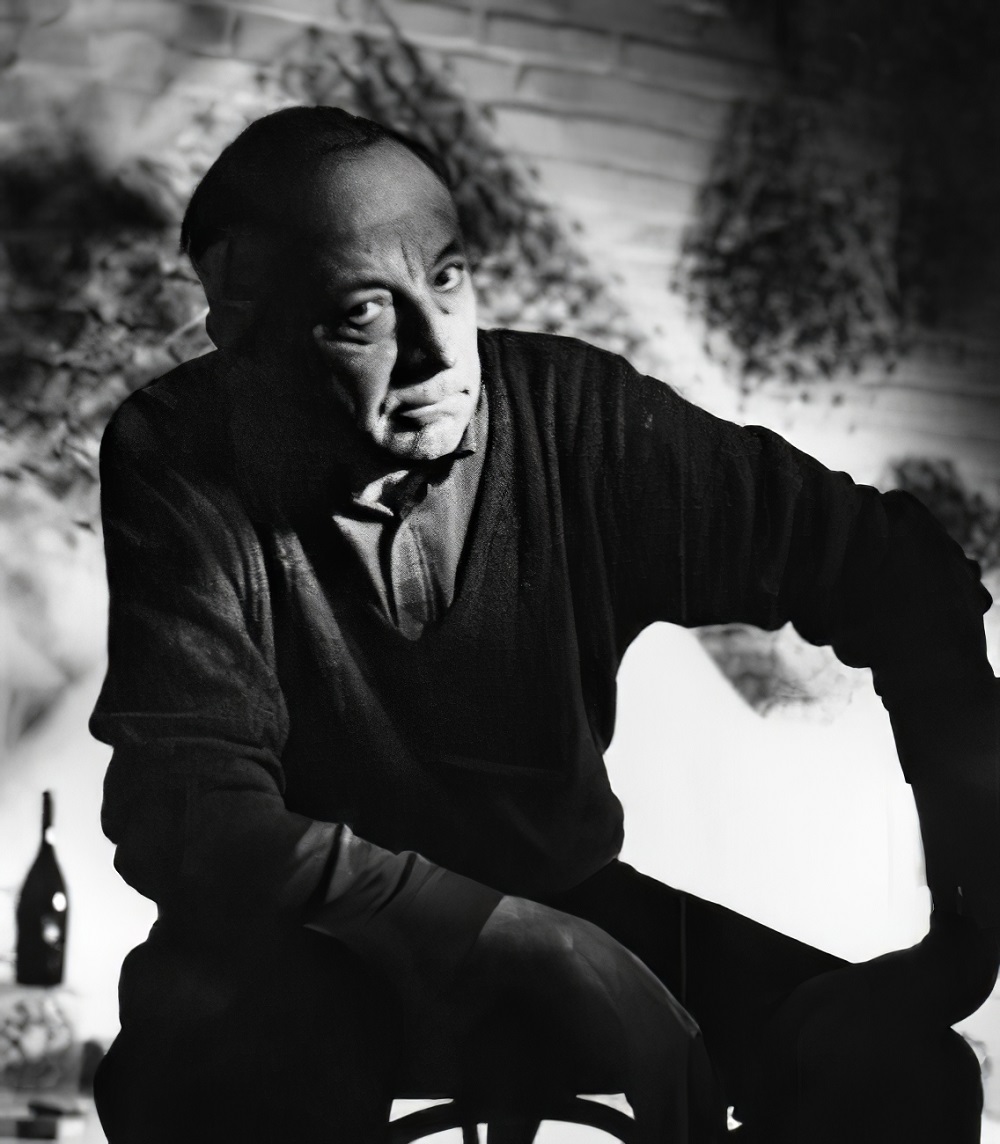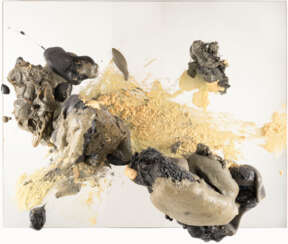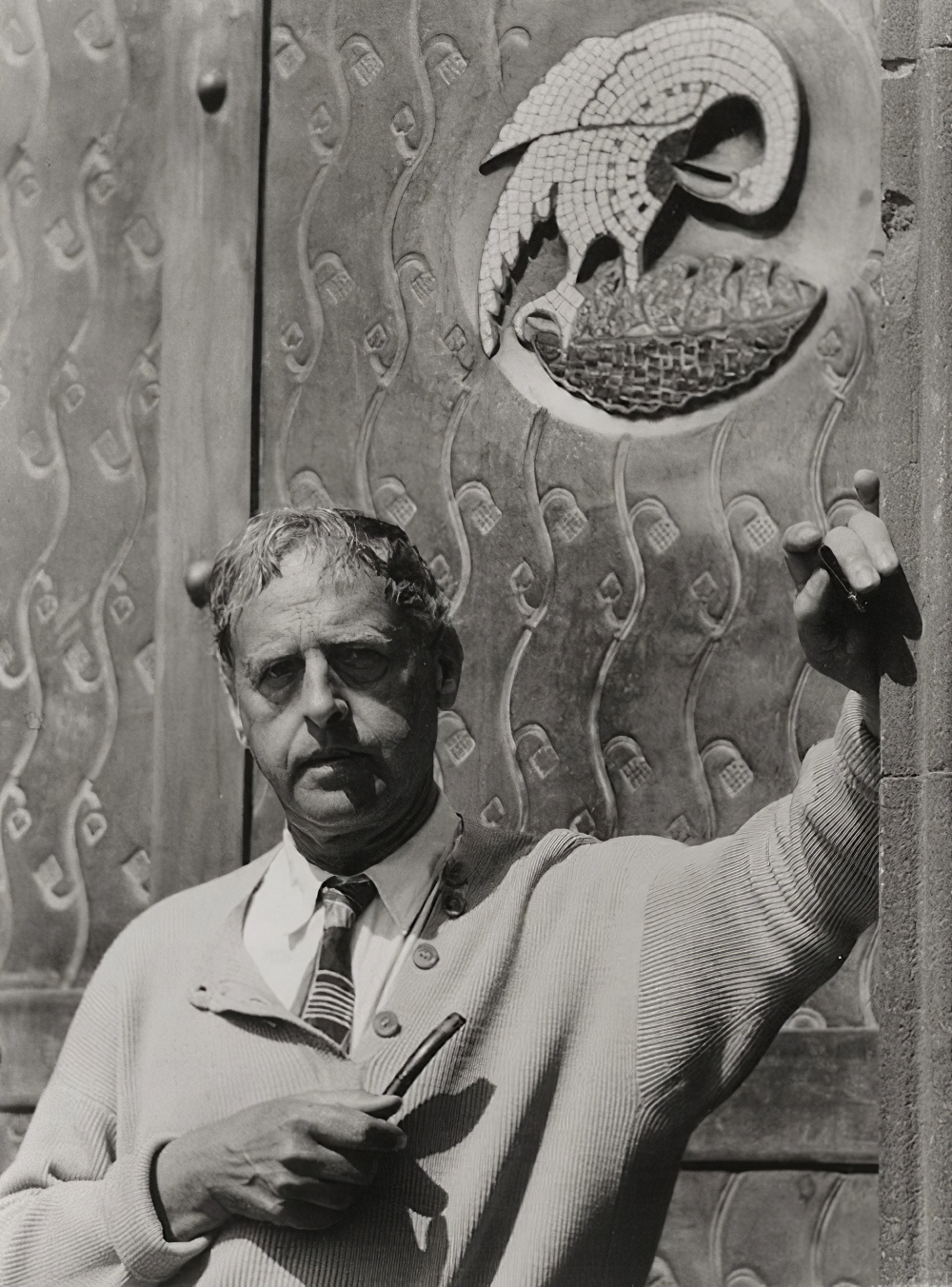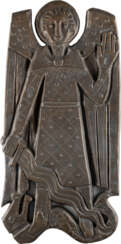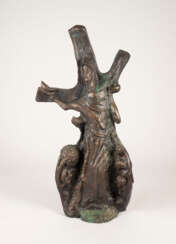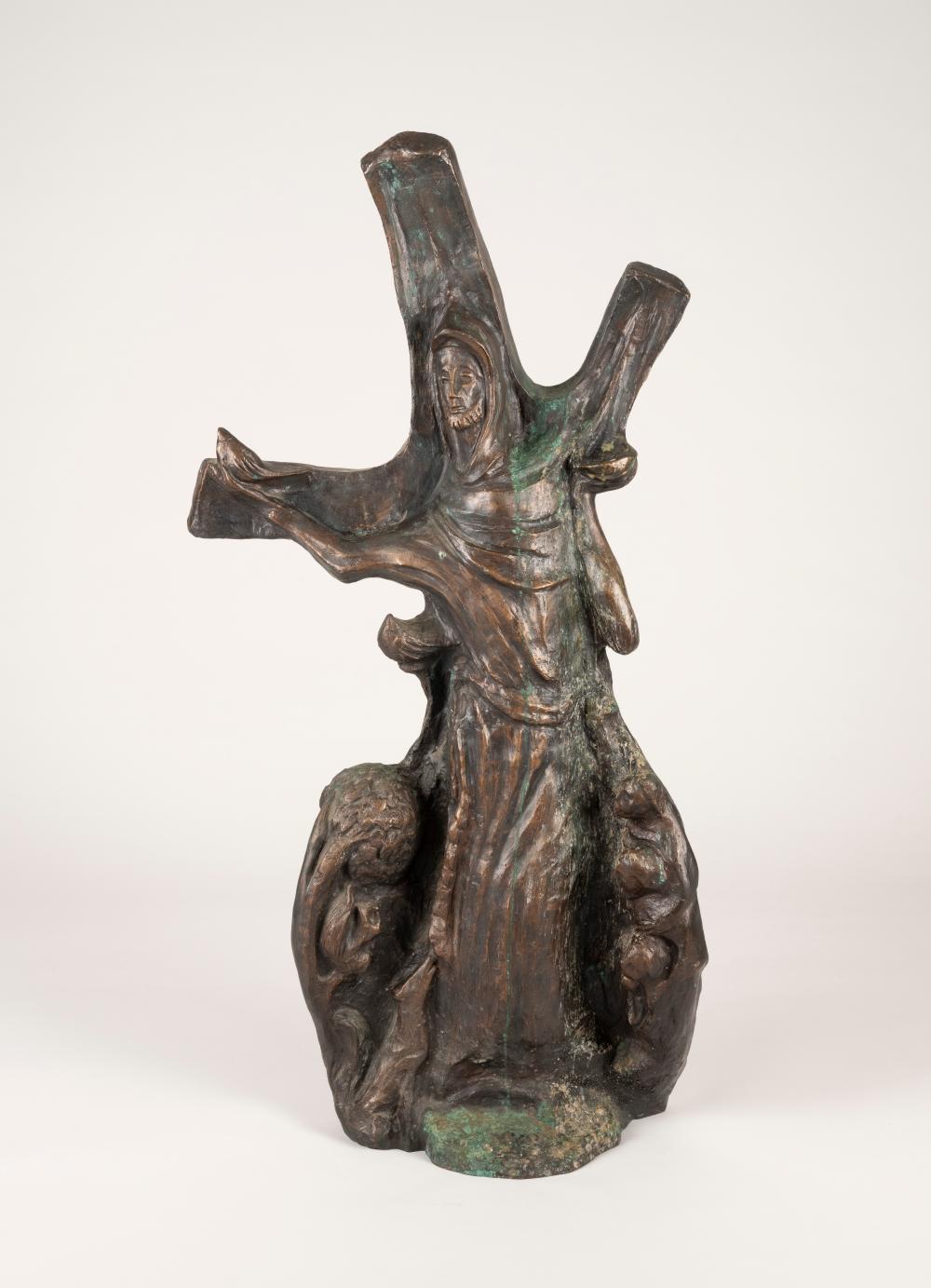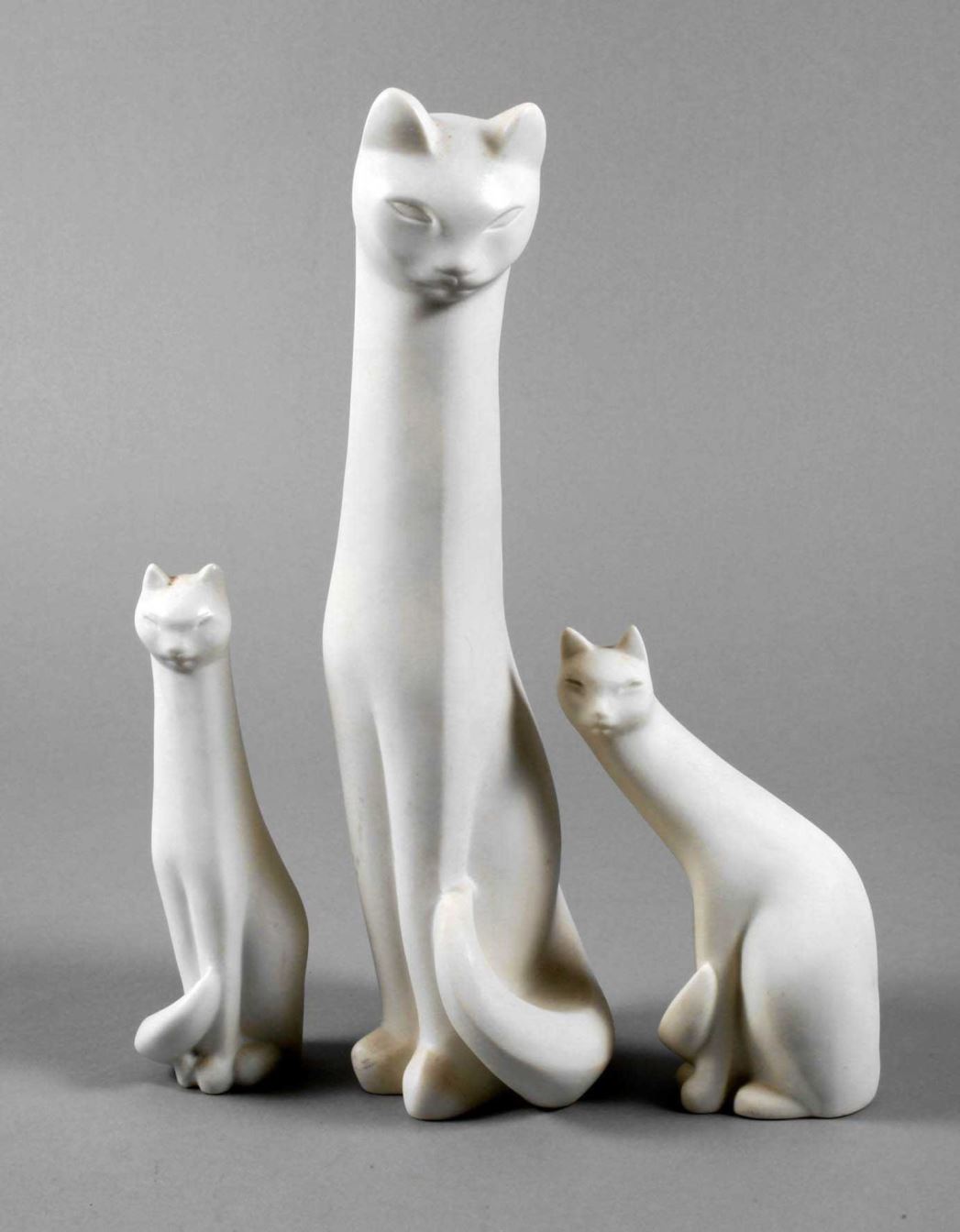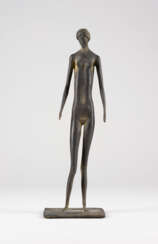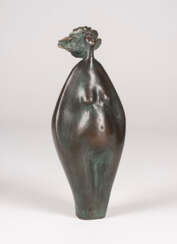
Modern Sculpture and Object Art — 129: Modern Kunst
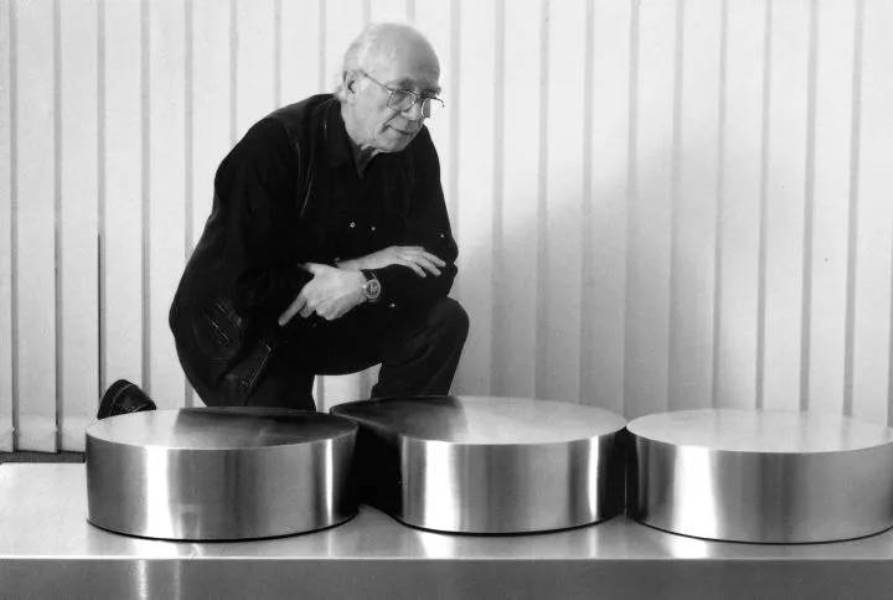
Friedrich Becker was a German artist, jeweler, and inventor of kinetic jewelry.
Friedrich Becker is one of the most influential jewelers of the second half of the twentieth century. He became known primarily for his avant-garde projects of kinetic jewelry and large kinetic objects.
Becker was interested in kinetics, the interaction of force and motion already during his apprenticeship years. He first trained as a mechanical engineer, then joined the aviation department. Only after World War II did he "make the reckless decision to become a jeweler." After training as a jeweler, he studied at the Werkkunstschule and then founded his own workshop in Düsseldorf, becoming a professor at the Düsseldorf University of Applied Sciences.
Becker experimented and supplemented various jewelry pieces with interchangeable stones and eventually developed kinetic jewelry. He was not only the inventor of kinetic jewelry, but also revolutionized the jewelry market with the introduction of stainless steel and synthetic gemstones. Each kinetic piece by Friedrich Becker is a perfect symbiosis of form, color and material.
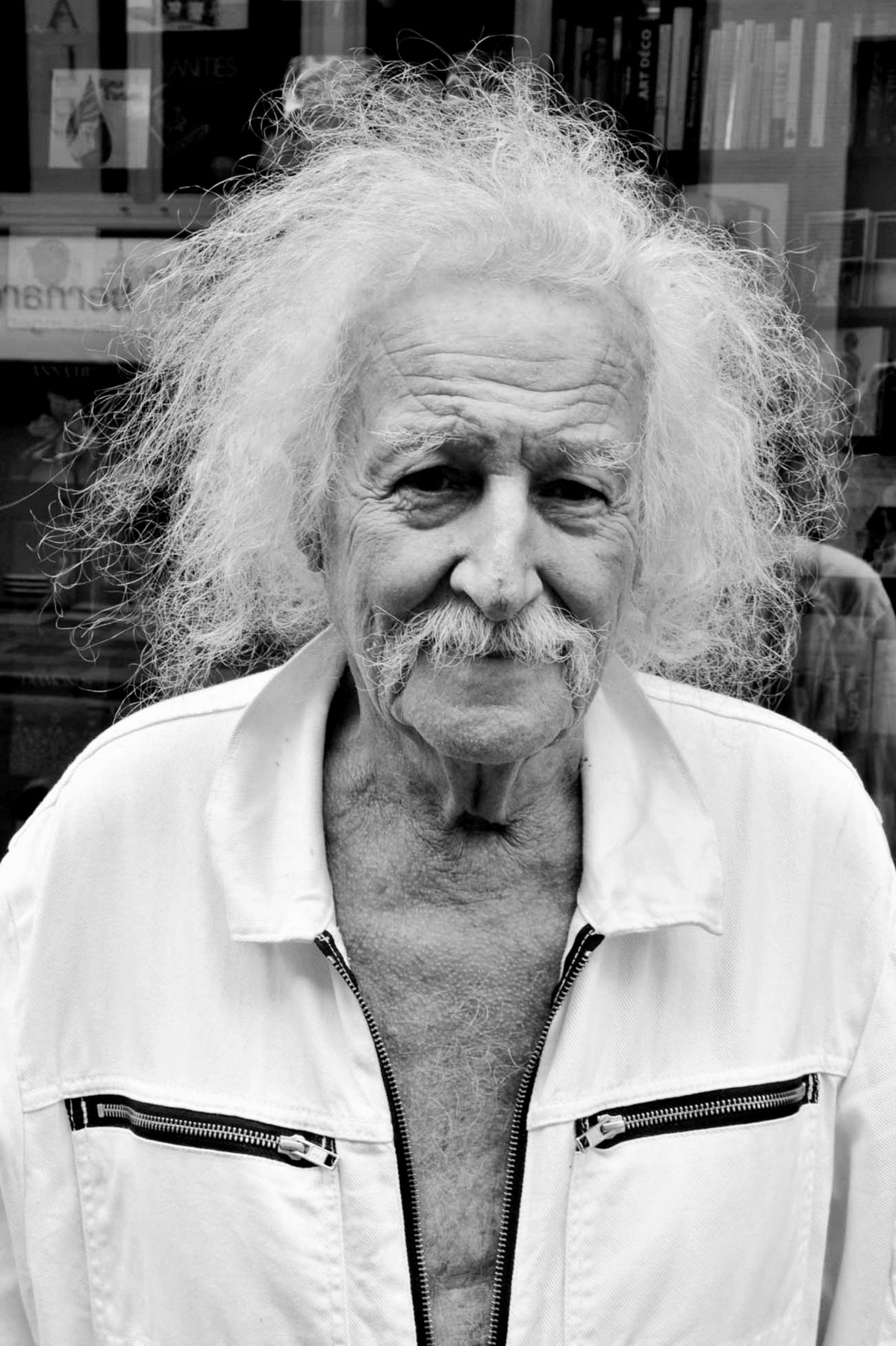
Peter Royen is a Dutch and German painter, graphic artist and sculptor, member of the Malkasten Association of Artists.
Peter Royen is widely known for his white silent paintings, for which he has been called the "artist of silence". Royen endlessly experimented with his beloved white, layering and layering it in different variations, combining it with other colors. Right angles, squares, rectangles, stripes feel comfortable in white, sometimes they are lost in it or even dissolve.

Peter Royen is a Dutch and German painter, graphic artist and sculptor, member of the Malkasten Association of Artists.
Peter Royen is widely known for his white silent paintings, for which he has been called the "artist of silence". Royen endlessly experimented with his beloved white, layering and layering it in different variations, combining it with other colors. Right angles, squares, rectangles, stripes feel comfortable in white, sometimes they are lost in it or even dissolve.

Joseph Heinrich Beuys was a German artist, renowned for his significant contributions to the realms of sculpture, painting, and installation art, which have left a lasting impact on the culture and art world. His work transcended traditional boundaries, merging art with social theory and politics, thus redefining the role of the artist in society. Beuys's unique approach to materials, incorporating substances like fat and felt, symbolized healing and insulation, reflecting his broader philosophical and ecological concerns.
Beuys's art was deeply influenced by his experiences during World War II and his academic background in natural sciences and sculpture. His concept of "social sculpture" proposed that art could transform society, emphasizing creativity as a fundamental component of human existence. This vision led him to use his performances, or "actions," as a medium to communicate his ideas, making him a pivotal figure in the Fluxus movement. Notable works such as "How to Explain Pictures to a Dead Hare" and "7000 Oaks" exemplify his innovative use of performance and environmental art to engage and challenge the public.
His legacy is preserved in major museums and galleries worldwide, including the Museum of Modern Art in New York and the Tate Modern in London. These institutions house key pieces that exemplify Beuys's diverse artistic output, from his early drawings and sculptures to his later installations and public interventions. His influence extends beyond the art world, impacting environmental activism and educational reform, underscoring his belief in the transformative power of art.
For collectors and experts in art and antiques, Joseph Heinrich Beuys remains a figure of immense interest, not only for his groundbreaking artworks but also for his profound impact on contemporary art theory and practice. To stay informed about new product sales and auction events related to Beuys, we invite you to sign up for updates. This subscription ensures you are always in the loop regarding opportunities to engage with the enduring legacy of one of the most influential artists of the 20th century.
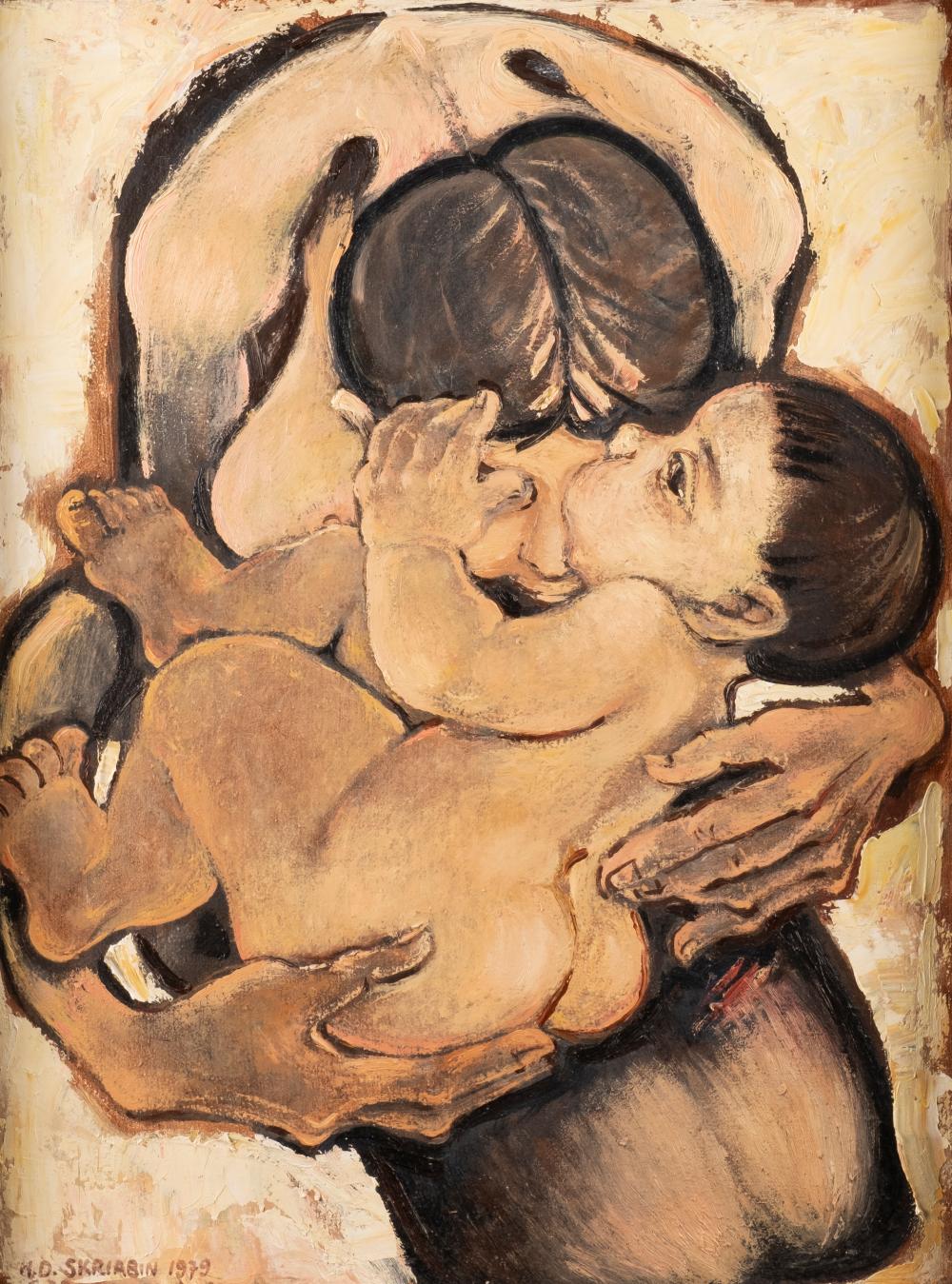
Hanna Dąbkowska-Skriabin is a Polish artist.
She graduated from the Academy of Fine Arts in Warsaw in the Department of Painting.
Hanna was very concerned about the fate of the human race, which is ruining itself with greed and short-sightedness. This is reflected in the works of the artist: many of her paintings are a timeless vision of a harsh world dominated by suffering and injustice. As if to protest against all this evil, Hanna Dąbkowska-Skriabin painted both paintings about love and beautiful landscapes. She is best known for her oil paintings. She has also mastered the techniques of ceramics and tapestry.

Hanna Dąbkowska-Skriabin is a Polish artist.
She graduated from the Academy of Fine Arts in Warsaw in the Department of Painting.
Hanna was very concerned about the fate of the human race, which is ruining itself with greed and short-sightedness. This is reflected in the works of the artist: many of her paintings are a timeless vision of a harsh world dominated by suffering and injustice. As if to protest against all this evil, Hanna Dąbkowska-Skriabin painted both paintings about love and beautiful landscapes. She is best known for her oil paintings. She has also mastered the techniques of ceramics and tapestry.

Hanna Dąbkowska-Skriabin is a Polish artist.
She graduated from the Academy of Fine Arts in Warsaw in the Department of Painting.
Hanna was very concerned about the fate of the human race, which is ruining itself with greed and short-sightedness. This is reflected in the works of the artist: many of her paintings are a timeless vision of a harsh world dominated by suffering and injustice. As if to protest against all this evil, Hanna Dąbkowska-Skriabin painted both paintings about love and beautiful landscapes. She is best known for her oil paintings. She has also mastered the techniques of ceramics and tapestry.

Hanna Dąbkowska-Skriabin is a Polish artist.
She graduated from the Academy of Fine Arts in Warsaw in the Department of Painting.
Hanna was very concerned about the fate of the human race, which is ruining itself with greed and short-sightedness. This is reflected in the works of the artist: many of her paintings are a timeless vision of a harsh world dominated by suffering and injustice. As if to protest against all this evil, Hanna Dąbkowska-Skriabin painted both paintings about love and beautiful landscapes. She is best known for her oil paintings. She has also mastered the techniques of ceramics and tapestry.

Hanna Dąbkowska-Skriabin is a Polish artist.
She graduated from the Academy of Fine Arts in Warsaw in the Department of Painting.
Hanna was very concerned about the fate of the human race, which is ruining itself with greed and short-sightedness. This is reflected in the works of the artist: many of her paintings are a timeless vision of a harsh world dominated by suffering and injustice. As if to protest against all this evil, Hanna Dąbkowska-Skriabin painted both paintings about love and beautiful landscapes. She is best known for her oil paintings. She has also mastered the techniques of ceramics and tapestry.
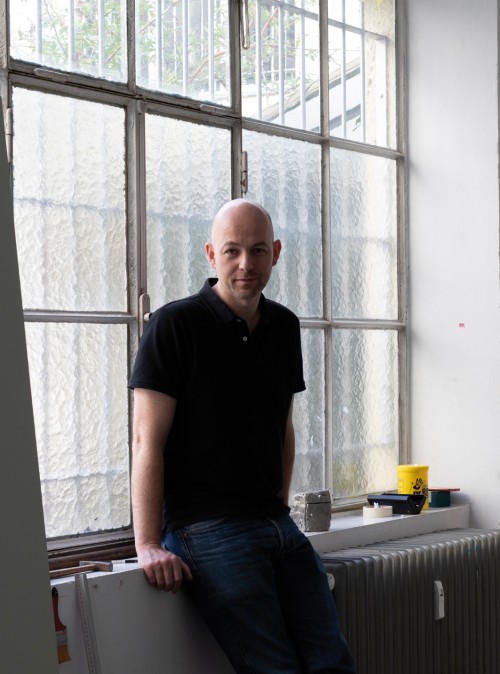
Benjamin Houlihan is a German painter, sculptor, and artist.
He studied at the Düsseldorf Academy of Art, where he is now a teacher. Since 2010, the artist has been transforming inconspicuous everyday objects, changing their material and size, into larger figures with a suggestive aura. In his wall paintings made with cottage cheese and food dyes, which Houlihan applies with his tongue, he also touches on the theme of painting.
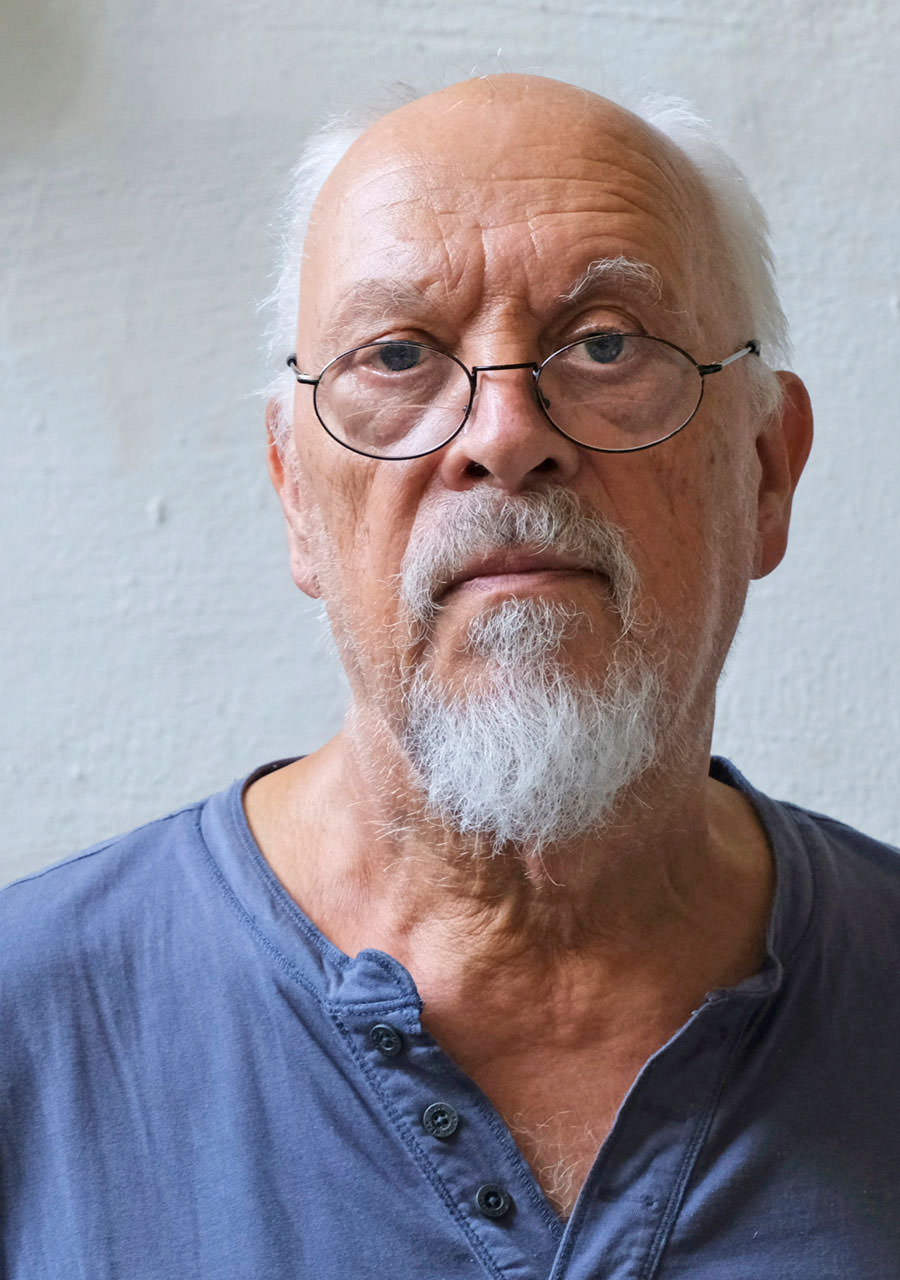
Karl Ulrich Nuss is a German artist and sculptor who creates large-scale bronze compositions.
His father was the sculptor Fritz Nuss (1907-1999), Karl Ulrich Nuss continued his work and developed an unmistakable design style that characterizes all his sculptures. They depict single people, couples, families, as well as new fantastical creations from the animal kingdom. These works can be seen in public spaces in Bochum, Frankfurt/Main and Stuttgart.


